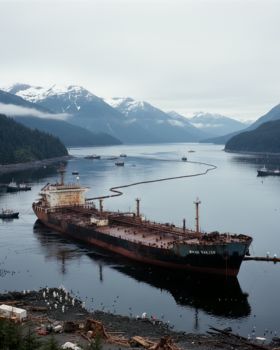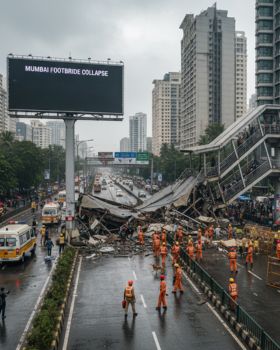
Disclaimer:
The content provided in this blog is for informational purposes only and reflects general insights based on publicly available information about the Deepwater Horizon Oil Spill and related safety practices. It does not assign blame or responsibility to any individuals, companies, or regulatory bodies involved. The intention is to highlight lessons learned and the importance of safety induction and contractor preparedness in high-risk industries. All product references, including SHEQ Network’s solutions, are intended as examples of modern tools that may support improved safety practices. Readers should consult with relevant professionals or regulatory authorities for specific guidance applicable to their organization or jurisdiction.
The Deepwater Horizon Oil Spill: A Defining Moment in Environmental History
The Deepwater Horizon Oil Spill, also known as the BP oil spill 2010, stands as one of the most catastrophic environmental disasters in modern history. On April 20, 2010, the Deepwater Horizon offshore drilling rig, operated by BP, suffered a catastrophic explosion in the Gulf of Mexico. Tragically, 11 workers lost their lives, and over the next 87 days, millions of barrels of crude oil were uncontrollably released into the ocean.
The consequences of this Gulf of Mexico oil disaster were extensive. The spill devastated marine habitats, severely damaged coastal ecosystems, and disrupted local economies, particularly fishing and tourism industries. Beyond the immediate environmental impact, the incident highlighted serious concerns about offshore drilling safety, regulatory lapses, and emergency preparedness.
Understanding the Deepwater Horizon Oil Spill
The Deepwater Horizon platform was drilling at approximately 5,000 feet when the blowout occurred. Investigations revealed that a combination of mechanical failures, poor decision-making, and inadequate risk assessments were primary contributors to the disaster.
Over nearly three months, the oil spill caused profound harm to marine life, including fish, sea turtles, dolphins, and bird populations. The incident crippled local fishing communities and tourism businesses, with long-lasting effects on regional economies and environmental stability.
The BP oil spill 2010 became a global wake-up call, underscoring the urgent need for strict safety protocols, robust emergency response strategies, and comprehensive training for all personnel—especially contractors operating in high-risk environments.
The Crucial Role of Safety Induction in High-Risk Industries
One of the critical lessons from the Deepwater Horizon disaster is the importance of safety induction. Although many of today’s advanced safety systems and technologies were not available in 2010, the foundational concept of thorough safety preparation remains essential.
A well-structured safety induction ensures that all workers, including contractors, are fully aware of site-specific hazards, emergency procedures, and essential safety protocols. Proper safety induction fosters a proactive safety culture and equips personnel to handle high-risk scenarios effectively.
Had more rigorous safety induction processes been in place and stringently enforced, some of the risks associated with the Deepwater Horizon Oil Spill may have been better understood and mitigated. While no system can guarantee absolute prevention, enhanced safety training can significantly reduce the likelihood of such catastrophic outcomes.
Advancements in Safety Practices Since the BP Oil Spill 2010
In the aftermath of the BP oil spill 2010, the offshore drilling and energy industries began to reevaluate and strengthen safety standards worldwide. Regulatory bodies introduced more stringent oversight, and companies committed to improving their safety practices.
One of the most significant advancements has been the widespread adoption of online induction platforms. While such digital solutions were not common in 2010, they are now essential in industries involving high-risk work. These platforms offer a consistent, accessible, and scalable way to deliver safety training and onboarding, particularly for contractors.
Through online induction systems, organizations can:
- Provide up-to-date, site-specific safety information
- Customize training for different job roles
- Ensure mandatory training is completed before site entry
- Maintain comprehensive and accurate training records
This evolution represents a critical step forward in proactive safety management.
Key Takeaways from the Gulf of Mexico Oil Disaster
The Gulf of Mexico oil disaster remains a powerful reminder of the importance of:
- Clear communication across all organizational levels
- Strong safety leadership and accountability
- Thorough and consistent training for employees and contractors
Safety cannot be an afterthought. It must be fully integrated into daily operations, especially in environments involving complex machinery and hazardous materials.
Today, digital safety induction solutions play a vital role in improving worksite preparedness and enhancing safety awareness. These tools allow organizations to deliver training remotely, track completion efficiently, and ensure consistent safety messaging across diverse teams.
Moving Forward: Building Safer Worksites Through Modern Solutions
The legacy of the Deepwater Horizon Oil Spill and the BP oil spill 2010 continues to shape the future of workplace safety. The lessons learned emphasize the need to invest in preventive strategies and modern safety management solutions.
One of the most impactful steps organizations can take is the implementation of online induction and safety induction software. These systems offer:
- Standardized safety training across worksites
- Streamlined contractor onboarding
- Real-time updates on safety procedures
- Accurate tracking of induction and training records
By integrating these tools into their safety frameworks, companies can promote a stronger safety culture and minimize the risk of operational incidents.
Conclusion: How Online Induction Can Help Prevent Future Incidents
While no system can eliminate all risks, companies can significantly reduce them by using the safety tools available today. Modern online induction and safety induction software support organizations in delivering consistent, site-specific training, ensuring contractors are adequately prepared, and fostering a culture of safety from the very start.
Although such advanced systems were not widely available at the time of the BP oil spill 2010, their current application offers a meaningful way to help prevent misunderstandings, improve contractor readiness, and promote safer work environments.
By learning from incidents like the Gulf of Mexico oil disaster, industries can take tangible steps to better protect people, the environment, and their operations in the future.
Learn more at sheqnetwork.com and transform the way you manage contractor safety today.
👉 Interested in seeing how SHEQ Network’s solutions can support your safety goals?
📞 Contact us at info@sheqnetwork.com or call us at +353 21 4536034 for a personalized demo!
✅ Book your free demo now!



